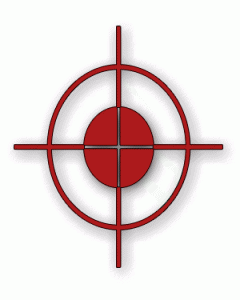To maximize effectiveness and returns from your marketing efforts, you need to focus your resources to that part of the market that has the highest likelihood to buy and obtain maximum utility from your product; a target market.
When you choose a target market, you have a smaller group of customers to focus all your attention on, improving your chances of the message reaching the intended recipients.
But how does one go about choosing the appropriate target market?
A market is comprised of individual buyers. Each of these buyers have measurable traits that identify their behavior and how they make choices; they also have habits that are predictable; and their social status can be easily quantified in monetary terms.
How to choose a Target Market
A good way is to ask yourself the following questions in succession, to help identify your target market
After the harder task which is developing your product or service, you have to ask yourself
1. “Who would benefit the most from my product or service?”
This question establishes a group of prospects who currently need a similar product or service to yours and either do not have a current solution to their problem or are not satisfied with the existing solutions and options available to them. This is the most important consideration when you start to choose a target market.
Then follow it up with,
2. “Who would pay the most to get my product or service?”
After establishing whom would benefit the most from your product, you now need to segregate them further into smaller categories based on available spending. Choose a target market of the highest bidders.
This is because you are in the business of getting maximum return from your investments and it therefor makes more sense to target the highest payers.
The intersecting point for both of these questions marks the best target market for your product or service.
It is at this point that you have to determine the viability of your business by answering the ultimate question,
3. “How many clients or customers are available to trade within this target market?”
The answer to this questions gives you an idea of how much you can reasonably expect to earn overtime from your customers and clients. If the number who need your product or service and can afford to buy from you is too low, you may not be able to make a good return on investment because you will extinguish your market before you have broken even. You may alternatively have to charge very high prices that consequently lead to very high marketing budgets. Don’t choose a target market that is too small, unless they are a small group of extremely wealthy and well paying customers and clients whom you can overcharge to compensate for the number.
4. “Can I access my target market?”
It does not help to have 5 target customers or client and each on a different continent. If your clients are few and too sparsely distributed, it will be a nightmare to travel and meet each of them.
Of course you can sell your product or service at a price high enough to take care of the associated expenses but if the option of a more accessible market that can give you an almost as good return exists, I would recommend it. Depending on what your product or service is, clients need proximity to you especially when you are starting out and have not gained enough credibility with them. They may need to physically meet you to close the deal or to get updated information from you before they do. Make sure to choose a target market that is accessible.
5. “Does my target customer or client poses the authority and ability to buy from me?”
The difference between the user and the buyer is important when evaluating who exactly makes the final buying decision.
If your target market requires permission or a higher authority to buy for them then you need to take this into consideration and craft a message that attracts both the user (the actual consumer) and the buyer (provides the money).
If the buyer is inaccessible or too difficult to convince, you may need a new target market.
When all the above information is carefully considered the target market can now be identified and the message to attract them designed.
Choosing a target market is not an easy process and any mistakes made at this stage are expensive and extremely difficult to correct. I would therefore advice entrepreneurs and budding entrepreneurs to take enough time at this stage and utilize business design tools, like the lean canvas model, to help identify a practical and profitable target market.

